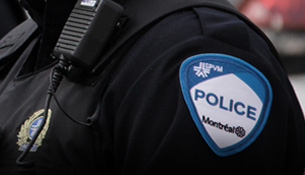
Bicycle paths
In Montréal, bicycle lanes are categorized according to the division of the roadway with motorized vehicles: shared lanes, designated lanes on the same road (bicycle lane) and reserved bicycle paths.
Designated lane
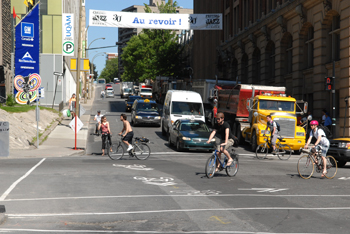
Bicycle lane
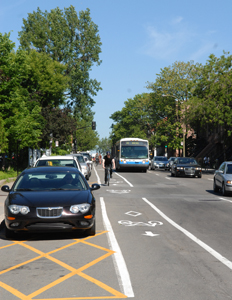
For the comfort and safety of cyclists, cars are not allowed in this lane (Article 310 of the Highway Safety Code), but motorists can cross the lane to park their vehicles. Cyclists can cross the bike lane to avoid an obstacle or to turn left.
The cycle lanes are open year-round and are ploughed in winter at the same time as the rest of the street.
Bicycle Path
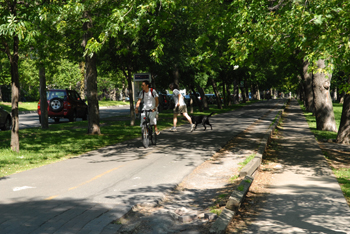
Cycle paths on streets

Pavement-level cycle path
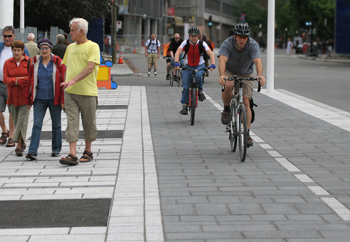 Separate from the street, these paths are located between the road and the section of the sidewalk reserved for pedestrians, and indicated by marks or pavement of a different colour.
Separate from the street, these paths are located between the road and the section of the sidewalk reserved for pedestrians, and indicated by marks or pavement of a different colour.

